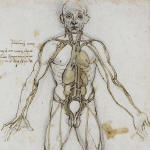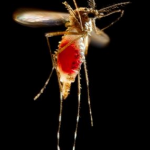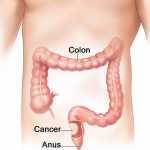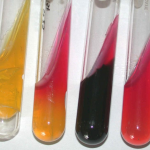Cirrhosis, the final stage of liver disease, is the 12th leading cause of death in the United States. Unhealthy bacteria in the mouth and gut appear to play a role.
Disease
Zika virus has been around since at least 1947, causing mild symptoms. All of a sudden it went full-beast mode and started producing shrinking heads in babies, and other terrible neurological outcomes. Scientists may have figured out that one little amino acid could responsible for flipping the script.
Women who suffer from some of the more extreme menopausal symptoms can take heart from a new analysis of the Women's Health Initiative data. A long-term, follow-up found no link between hormone replacement therapy and all-cause mortality, total cancer mortality or cardiovascular mortality.
Both obesity in general, and central obesity, are associated with a higher risk of some breast cancers, finds a new Chinese study. The strength of the association was affected by whether the tumors carried receptors for estrogen or progesterone.
It used to be that breast cancer diagnosis often meant a radical surgery, removing the breast as well as underlying muscle. But in the last few decades, we've learned that such extreme measures are usually not necessary. And recent research indicates that minimal surgery (along with radiation and systemic treatment) may be all that's necessary, in some cases.
A new study in JAMA Surgery reports that a crucial decision – whether a breast cancer patient should undergo a double mastectomy when only one breast is affected – is heavily influenced by her surgeon's recommendation.
Most Americans are rightly squeamish about forcing anyone to do anything against their will. But allowing homeless people to do whatever they want is no longer a viable solution. When a community fails to practice proper hygiene and sanitation, it becomes a ticking time bomb for infectious disease.
Even under the best of circumstances, the five-year survival rate for pancreatic adenocarcinoma is devastating. According to the American Cancer Society, for stage IA it's just 14%. And for stage III – a horrifying 3%.
Colorectal cancer is the second-leading cause of cancer death in the U.S. Finding it early can vastly improve the chances for successful treatment, but screening rates are low, even though screening is known to be effective. But if people are reminded to be screened, or are sent in-home tests, the screening rates improve.
New reports out of Australia contain some sobering news. The number of influenza cases this year is 2.5-times that of the same time period last year. Does this mean that the US is looking at a bad flu season? Probably yes, but there are many factors involved. Several experts explain.
While for some women it's been a lifesaver, the utility of mammography screening for breast cancer has been a bone of contention since it's unpleasant and can be downright painful. One way to make it more bearable would to give women more control over the procedure – and the FDA recently approved a device to do just that.
Rapid, accurate detection of a tuberculosis infection still remains a healthcare challenge. Developing an assay that's able to definitively diagnose TB, and one that's cheap, should be high on our priority list. Especially, as we annually see increases in TB's prevalence.











